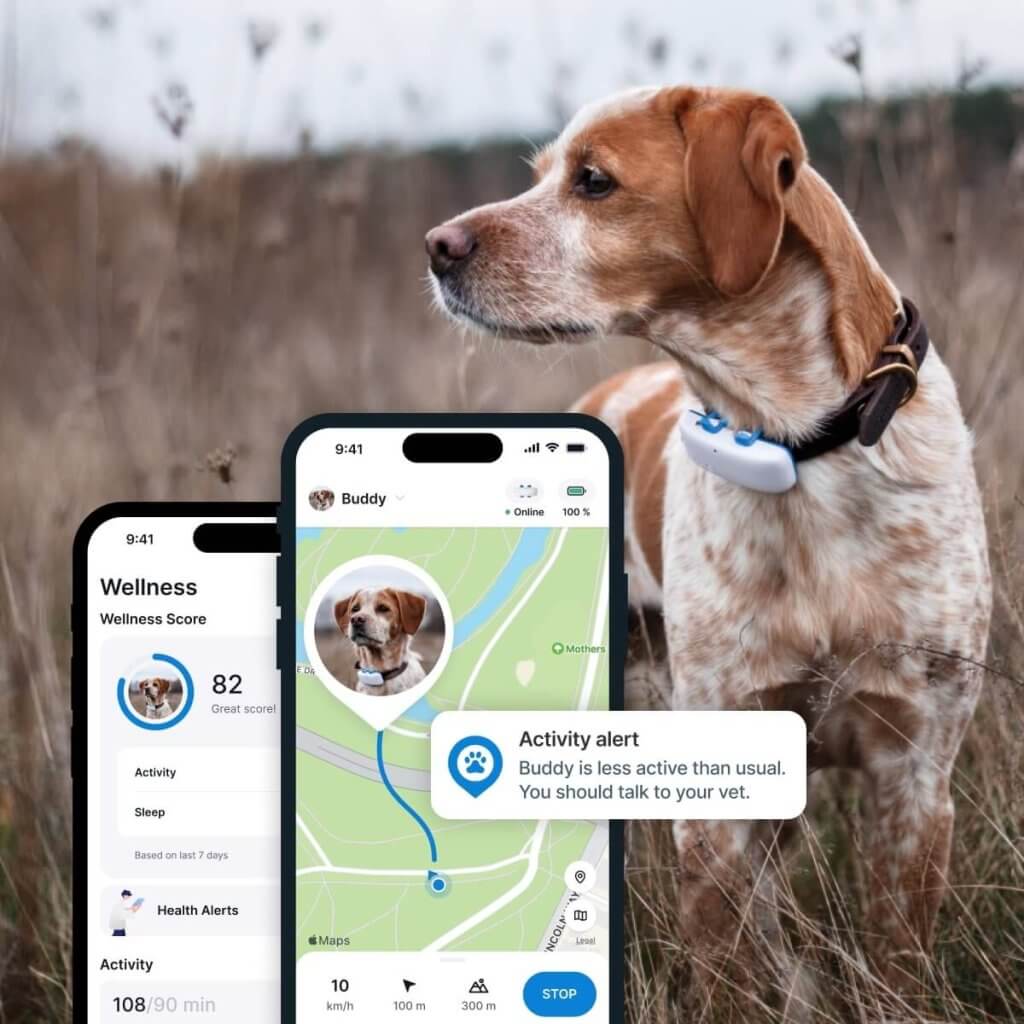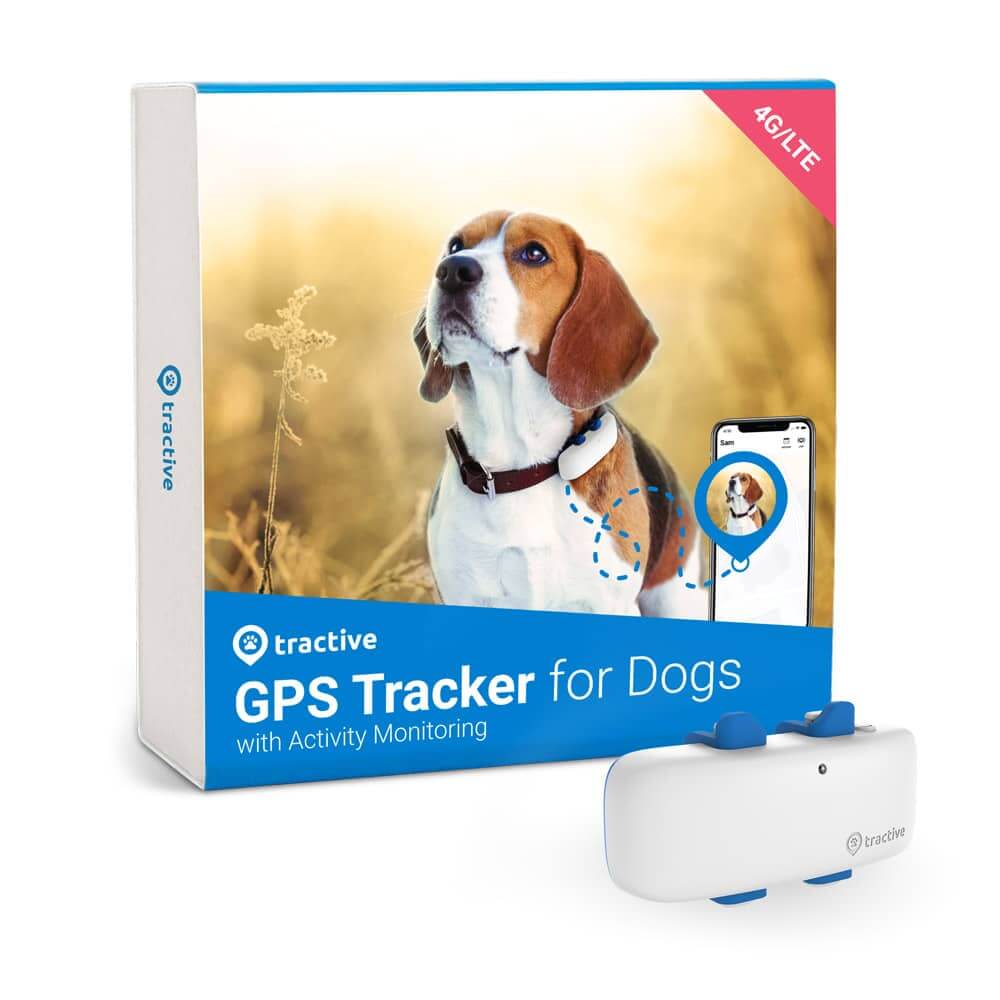 Approved by Dr. Dwight Alleyne, DVM
Approved by Dr. Dwight Alleyne, DVM Anemia In Dogs: Signs To Spot & Treat Right Away
Anemia in dogs counts as a serious medical condition - and it's often a sign of a deeper, more serious underlying health problem. Here's how to spot the signs & take action right on time.

If you’re like us, you love your dog to bits. So it can be heartbreaking seeing them more tired than usual or just not their normal lively self. And as it turns out, anemia in dogs can be easy to miss if you’re not vigilant – and can easily make your dog’s health take a turn for the worse.
So in this post, we’re going to cover all the ways you can spot the warning signs of anemia, what to expect at your vet’s, and some steps you can take to monitor your buddy’s health at home. (Like tracking their activity.) Let’s get started.

Find out how your dog spends their time.
Read moreWhat is anemia & how does it affect dogs?
Anemia is a health condition when your dog doesn’t have enough red blood cells to transport oxygen throughout their body.
- All of us – humans and dogs alike – needs red blood cells for our energy and overall health.
- So when our red blood cell levels drop, it can lead to fatigue, weakness, and worse health problems if left untreated.
What can cause anemia in dogs?
More often than not, anemia is usually a symptom of a deeper, more serious health problem. There are three primary reasons for it, including:
| Cause: | Which can result from: |
| A loss of blood | An injury, tumor, internal bleeding, or if your dog’s eaten something toxic (like, for example, rat poison, pesticide, or even certain medications like Tylenol) |
| A destruction of red blood cells (known as non-regenerative anemia) | Bone marrow disease, parvovirus, kidney disease, and even certain medications. |
| Increased destruction of red blood cells (including Methemoglobinemia & hemolytic anemia) | Genetic disorders, exposure to toxins – including medications meant for humans, like ibuprofen |
Still other causes of anemia in dogs can include:
- Gastrointestinal ulcers,
- Cushing’s disease,
- Lyme disease,
- Hypothyroidism,
- Infectious diseases, like canine distemper,
- Your dog having eaten foods that are off-limits to them,
- Problems with your dog’s immune system, like when its body attacks its own red blood cells. Which could also be triggered by some drugs, infections, or inflammatory diseases.
In all cases, anemia counts as a serious medical condition that needs the support of your vet right away.
⚠️ But more often than not, it doesn’t turn up overnight. Which means it could be easy to miss. Rather, anemia develops gradually over time – and one of the first signs is a drop in your dog’s energy levels.
The main signs of anemia in dogs
Keep an eye out for these warning signs – and get your dog to a vet right away if you notice:
- Pale gums, which can be a red flag. Healthy gums are usually a rosy pink color.
- Excessive panting or weird breathing, which might signal your dog is struggling to get enough oxygen.
- Difficulties breathing,
- Vomiting,
- Black stools,
- Increased heart rate,
- Unusual bruises,
- Swelling in the jaw or face,
- Weight loss,
- Jaundice, which turn up as yellow eyes or skin
- Loss of appetite,
- Weakness or fainting – you might notice your dog stumbling around, for example.
- Blood loss
- Lethargy, or if your usually active dog appears more tired, sluggish, or reluctant around your regular walks or playtime.
Now many of these symptoms are “emergency” signs that your dog’s body is already fighting off an infection or dealing with blood loss.
💡 But as it turns out, you can actually catch on to the signs of illness in your dog much before their health worsens – if you’re a little vigilant. Like, for example, a change in your dog’s activity.

“Anemic dogs also have little stamina or energy, so they seem listless or tire more easily.“
– VCA Animal Hospitals1
Now while you can treat mild cases of anemia at home with some guidance from your vet, more serious cases need medical intervention right away.
What to expect at your vet’s clinic
If you notice a sharp drop in your dog’s energy or other, concerning signs – heading to your vet is the first step. Your vet will most likely begin with a physical exam and run a couple of tests to figure out whether your dog is suffering from anemia – and why it’s happening in the first place.
These might include blood tests to measure your dog’s red blood cells, white blood cells, and platelets. Your vet might also recommend an X-ray, urinalysis, or ultrasound to rule out internal bleeding, infections, or any other organ problems. Or examine your dog’s bone marrow for cancer or infection.
Depending on what’s causing your dog’s anemia, your vet will most likely prescribe:
- Intravenous fluids or a blood/bone marrow transfusion, if it turns out to be due to blood loss.
- Anti-parasite medication or antibiotics if any infectious critters are to blame.
- Any immuno-suppressive medications, in case your dog’s own immune system is the culprit.
- Surgery to take care of any internal bleeding or remove a tumorous mass.
- Anti-poison therapy, if necessary.
- Special supplements to make up for any deficiency.
All of these can help address the root cause of your dog’s anemia and help restore their red blood cell levels – so they can regain their energy.
Are some dogs more vulnerable to anemia than others?
Yes, as it turns out, some dogs might be more at risk for developing Immune-mediated Hemolytic Anemia (IMHA). Including:
- The Collie family,
- Some Spaniel breeds, including English and American Cocker Spaniels,
- The Doberman family, including the Miniature Pinscher,
- Poodles,
- Bichon Frises,
- Maltese dogs,
- Old English Sheepdogs

So if you’ve got one of these good boys or girls at home, it’s a good idea to double-check with your vet what treatments they might need on an ongoing basis. With regular checkups, you can keep them healthy and happy for the long run.
How to treat anemia in dogs at home
Once you’re home with your vet’s instructions, it’s important to follow them to a T so that your buddy can be back in tip-top shape. So make sure you stay on top of your dog’s medications without fail, since you’ll need to follow them for the full course. (Meaning, even if your dog seems to get better right away.)
Besides, with your vet’s guidance, here are some ways you can help your buddy bounce back from a case of anemia at home:
- Consult with your vet what iron-rich ingredients you can add to your dog’s meals. They can best advise you on what foods and supplements can aid recovery.
- Keep away all potentially toxic materials away from your dog. These can include common over-the-counter medications, but also cleaning liquids and pesticides that you might keep at home or in your backyard. Keep these locked and well out of your dog’s reach.
- Ensure your dog gets plenty of rest in a comfortable, quiet space to sleep without interruption.
- Keep track of your dog’s symptoms, like checking their gums, breathing patterns, and overall behavior. If anything seems off, take a video to show to your vet before dropping by.
- Stay on top of your dog’s flea, tick, and heartworm preventatives. Parasites tend to be active throughout the year, so following your vet’s advice on prevention is key.
And finally…
- Monitor your dog’s activity. An anemic dog may not be at their 100% right away – so it’s best to take a few days off walks and play time as they recover.
That’s why – as a preventive step – vets recommend you:

“Keep track of your dog’s energy levels, especially how long they are able to walk.
If you notice significant declines, it could be a sign of pain, heart disease, or other illness.”
– VCA Animal Hospitals2
Because as your dog gets better, you do want to ensure they don’t overexert themselves and stay within a healthy range of exercise. Likewise, tracking your dog’s activity is one of the smartest ways to catch on to an illness early – even before it has a chance to worsen.
Where an Activity Tracker for dogs can step in
More often than not, a drop in your dog’s activity levels can be one of the first – and easiest to miss – signs that they’re not doing well, health-wise.
💡 But with an Activity Tracker for dogs, you’re on your way towards taking a more proactive role in keeping them at their happiest and healthiest.

With its built-in motion detector, your trusty Tractive GPS doubles as an Activity Tracker as well. Monitoring your dog’s movements all day long – and logging them in as “active minutes.”
Which, with time, can help you figure out:
- How active your dog is on the regular,
- Whether there’s a weird drop in your dog’s active minutes, which could signal something’s wrong,
- Whether there’s a sharp drop in your dog’s active minutes, which could even signal an emergency.
All of which can help you have a more productive conversation with your vet – and potentially save your buddy’s life while at it.

“Absolutely love this tracker…it gives great insights on (our dogs’) activity and sleep levels.
I’m comforted knowing that if they started acting strangely or the data shifted drastically that we could take them to vet potentially before we would notice something wrong.
Can’t recommend this tracker enough!“
– Eva, US (Source: Trustpilot)
Ready to help your buddy get an energy boost?
Usually, anemia is a symptom of a deeper, more serious underlying health condition. Including blood loss, an infection, chronic disease, or even your dog’s immune system going on overdrive. So watch out for signs like:
- Pale gums,
- Unusual bruises,
- Black stools,
- Panting or breathing weirdly – or just more than usual,
- Swelling in your dog’s jaw or face,
- Jaundice, or yellowed skin and eyes,
- Blood loss,
- Not eating as much,
- Seeming weak or even fainting,
- Seeming more lethargic than usual – more reluctant around walks or playtime
Once your vet’s diagnosed your dog and provide you a treatment plan – an iron-rich diet, plenty of rest, and monitoring your dog’s symptoms can all go a long way.
💡 And if you’ve invested in a Tractive device – you can now spot the warning signs (like a drop in your dog’s active minutes) much in advance.

Stay on top of your dog’s wellness
See how they’re doing at a glance with Wellness Score. Set goals. Compare with dogs like yours. Monitor sleep. Detect issues and keep them healthy.
Want a firsthand view of how your vet might treat an anemic dog? Here’s Dr. Spivey from the University Veterinary Hospital treating Bronx the dog:
And if you’ve liked this post, share it with a friend or a loved one – and let’s help build a safer, kinder world for our furry friends together.
Article sources
- VCA Animal Hospitals: Anemia in Dogs
- PetMD: Anemia in Dogs
- Lake Cross Veterinary: Symptoms, Causes & Treatment of Anemia in Dogs
- MSD Vet Manual: Anemia in Dogs
Your furry friend’s health and wellbeing means as much as to us as it does to you. So we’ve made it a priority to only share medically-relevant content on our blog.
This post was checked, double-checked, and medically verified by Georgia-based vet, Dr. Dwight Alleyne.

Originally from Long Island, New York, Dr. Alleyne began his career at a no-kill animal shelter before becoming a licensed veterinary technician. He graduated from Cornell University Veterinary College in 2006 and completed an internship at Purdue University.
Now practicing in Georgia, Dr. Alleyne specializes in soft tissue surgery and ultrasounds. He also writes pet health articles on his website, “The Animal Doctor Blog” (www.anmldrblog.com).




